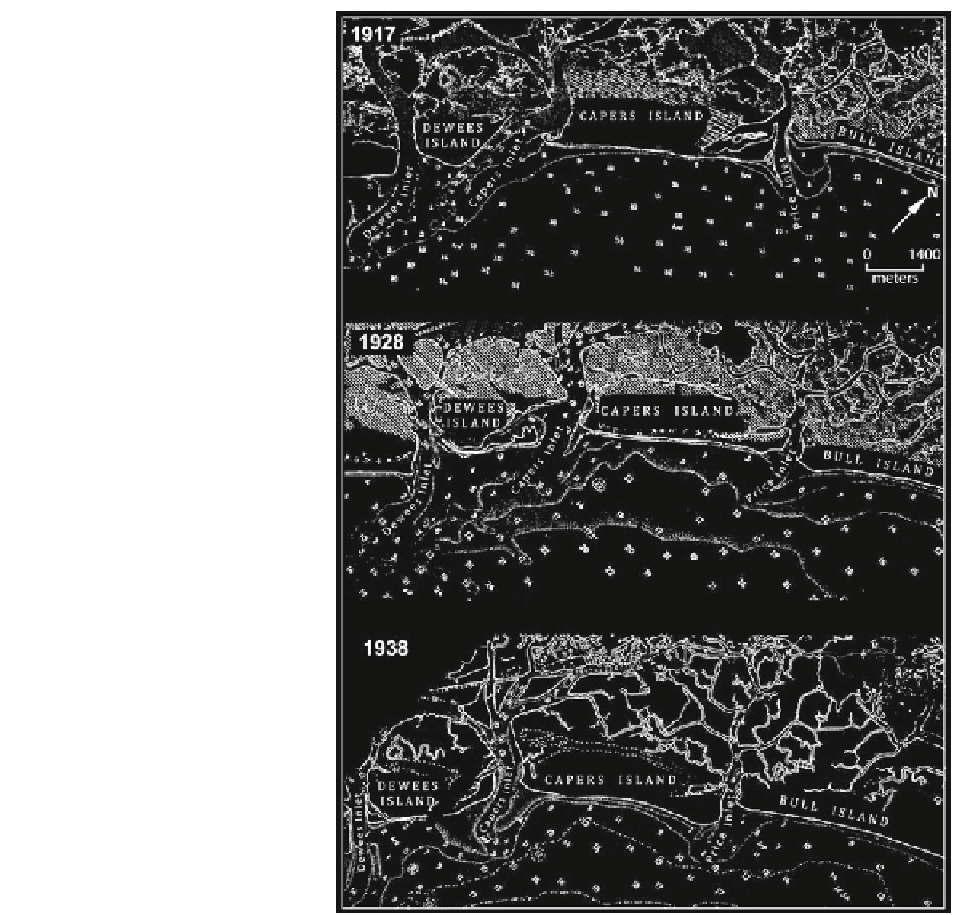Geology Reference
In-Depth Information
Fig. 12.8
U. S. Coast and
Geodetic Survey coastal
charts illustrate shoreline
changes and processes of
ebb-tidal delta breaching at
Capers and Price Inlets, SC
(From FitzGerald
1988
) . Note
the large bar that attached to
Dewees Island (1928) after a
new channel was breached
through the ebb delta at
Capers Inlet (1917). The same
breaching process created the
closed channel along the
northwest end of Capers
Island (1917)
defi ne the dimensions of the inlet system, migrational
behavior of the inlet channel, and conditions under
which the inlet fi lls with sediment. The size of the inlet
channel is controlled by tidal prism that is a function of
bay area and bay tidal range. Regions with large to
moderate tidal ranges (>2 m) and expansive open water
backbarrier areas tend to have large tidal prisms, pro-
ducing large, deep tidal inlets (d > 8 m; i.e. barrier
coasts of southern Virginia, South Carolina, Georgia,
East and West Friesian Islands, Copper River Delta
barriers, some of the Algarve inlets in Portugal),
whereas microtidal coasts with small bay areas pro-
duce small shallow inlets (<6 m deep; i.e., northern
South Carolina; southern North Carolina; Rhode
Island; much of the east and west coasts of Florida;
Nile River delta). As pointed out by Davis and Hayes
(
1984
) , large tidal inlets can also occur along microtidal,
wave-dominated coasts, if the inlet connects to a large
bay and accesses a large tidal prism (i.e. Barataria
Pass, Louisiana, d = 18 m; Pensacola Bay Entrance,
Florida, d = 10 m; Beaufort Inlet, North Carolina,
d = 10 m, pre-dredging). Likewise, small tidal inlets
occur in mesotidal regions where the inlet drains a
small tidal basin (i.e. Captain Sam's Inlet, South
Carolina; d = 5 m). Thus, the dimensions of inlet depos-
its along any coast are variable and highly dependent

